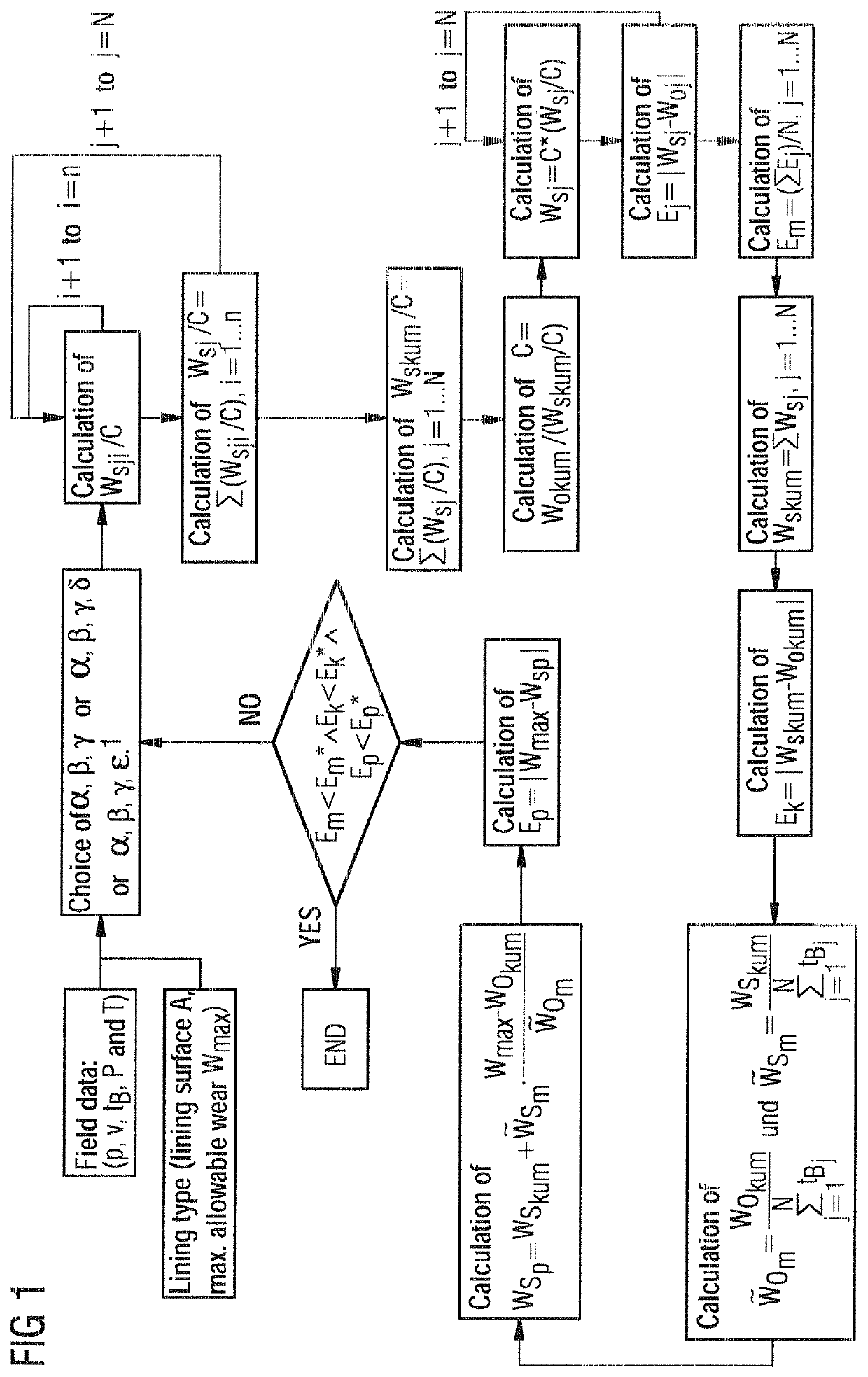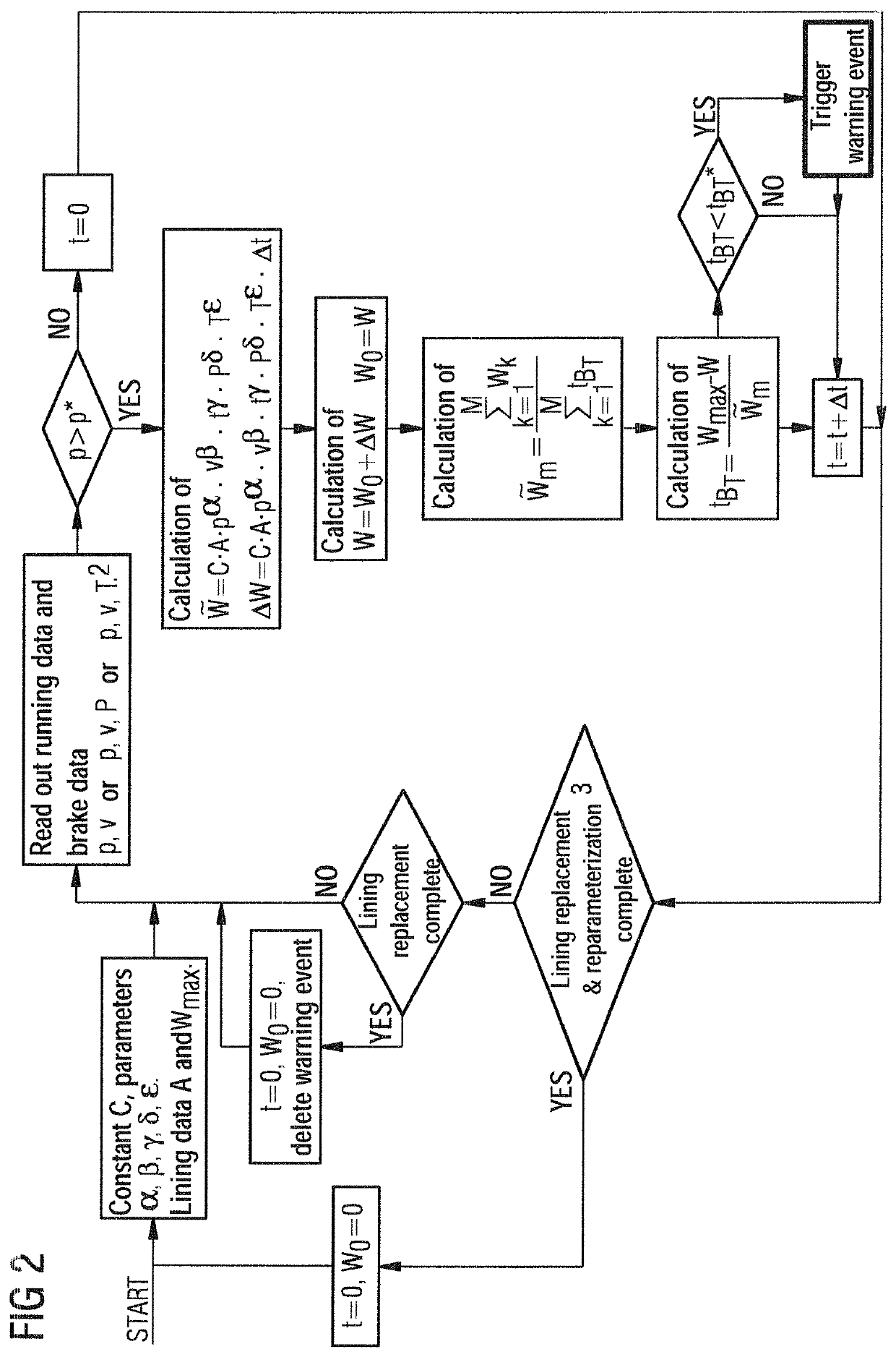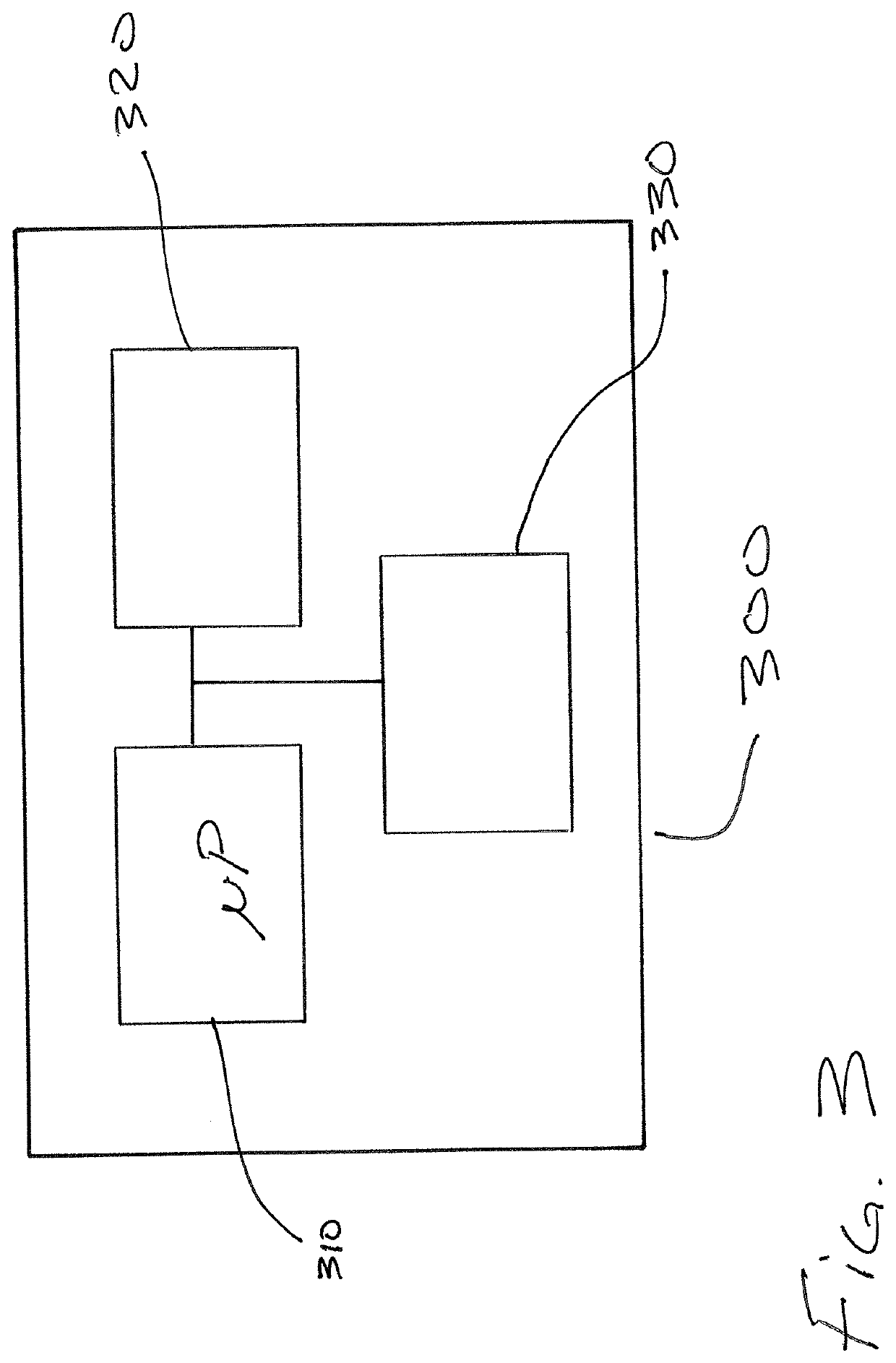Device and method for forecasting wear in brake linings
a technology for brake linings and forecasting devices, applied in brake systems, braking components, transportation and packaging, etc., can solve problems such as reducing lining thickness continuously, exposing brake linings of friction braking systems, and braking systems, and achieve the effect of reducing the number of sensors
- Summary
- Abstract
- Description
- Claims
- Application Information
AI Technical Summary
Benefits of technology
Problems solved by technology
Method used
Image
Examples
Embodiment Construction
[0019]In accordance with the invention, the abrasion of brake linings of rail vehicles is determined via a method in which a wear rate {tilde over (W)} is determined in accordance with the following relationship:
{tilde over (W)}=C·A·pα·vβ·tBγ·Pδ·Tε Eq. 1
where
C=general constant,
A=lining surface,
v=sliding speed,
tB=braking time,
P=brake power,
T=contact temperature of the friction pairing,
α=material parameter pressure,
β=material parameter speed,
γ=material parameter braking time,
δ=material parameter brake power, and
ε=material parameter temperature.
[0020]Significant factors for determining the wear rate {tilde over (W)} are lining surface A, contact pressure p, sliding speed v and braking time tB. The use of the contact temperature T and the brake power P is optional, i.e., not essential.
[0021]While the lining surface A is derived from the structural features of the brake, the contact pressure p, the sliding speed v and the braking time tB are determined continuously du...
PUM
 Login to View More
Login to View More Abstract
Description
Claims
Application Information
 Login to View More
Login to View More - R&D
- Intellectual Property
- Life Sciences
- Materials
- Tech Scout
- Unparalleled Data Quality
- Higher Quality Content
- 60% Fewer Hallucinations
Browse by: Latest US Patents, China's latest patents, Technical Efficacy Thesaurus, Application Domain, Technology Topic, Popular Technical Reports.
© 2025 PatSnap. All rights reserved.Legal|Privacy policy|Modern Slavery Act Transparency Statement|Sitemap|About US| Contact US: help@patsnap.com



